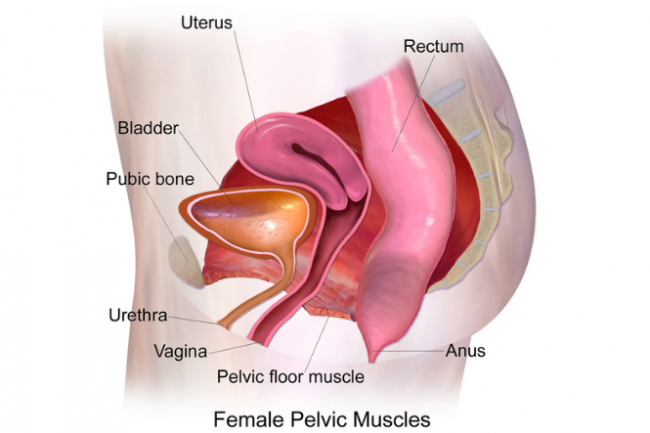The best results will be achieved by seeking help from a pelvic health physiotherapist or continence advisor who will assess you individually and design a customised training programme ideally suited to you.
Strengthening your pelvic floor muscles can take 3-6 months of regular exercises.
Find your pelvic floor muscles
The first step is to correctly identify the muscles:
- Sit or lie down on a comfortable surface like your bed.
- Relax your thighs, buttocks and tummy/puku muscles. Breathe normally, don’t hold your breath or change your breathing pattern
- Lift and squeeze your pelvic floor and hold the contraction for 5 seconds. To get the correct contraction, you can imagine stopping from farting, or stopping from peeing. Or you can imagine you are squeezing around a tampon and trying to suck it up into your vagina. As everyone’s brain works differently, it's best to trial different words to see what works for you.
If you're not sure you're doing it right, try to stop your flow when passing urine (peeing), then restart it. Only do this to identify and test the correct muscles to use once. Don't exercise your pelvic floor muscles this way as it can cause issues with your pelvic health. You can also test your pelvic floor muscles by placing 1-2 clean fingers into your vagina and squeezing your muscles around them. The muscles should be squeezing around your fingers, and lifting your fingers into the vagina.
If you are unable to feel any definite squeeze and lift action in your pelvic floor muscles, it is important that you seek professional advice from a pelvic health physiotherapist or continence advisor. They can assess you internally to make sure you are doing the exercises correctly.
Here is a directory of pelvic health physiotherapists(external link) in Aotearoa New Zealand.
What exercises can I do?
At first you may need to perform these exercises while sitting or lying down. As the muscles strengthen, you can progress to exercise standing up. As with any muscle training activity, start with what you can achieve and progress from there.
Over time, increase both how long you hold the contraction for, as well as how many times you repeat the exercise in a row. Do the exercises daily for the best improvement possible. Long contractions of the muscle (up to 10 seconds) combined with short fast contractions (10 times for 1 second) work the best to get your pelvic floor strong with great control.







